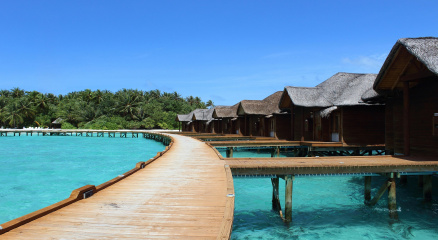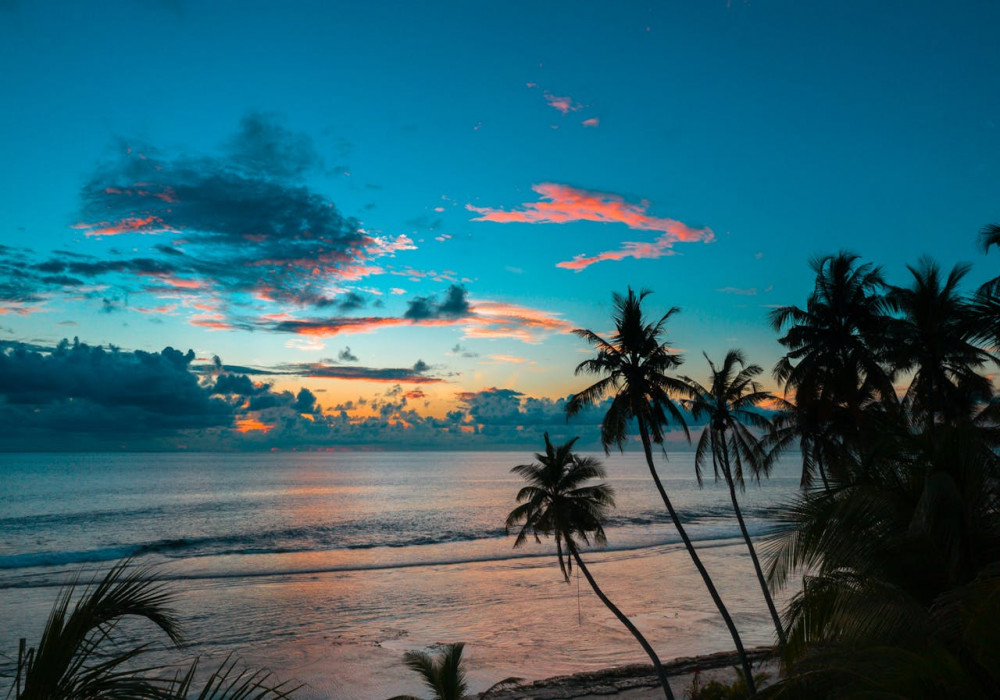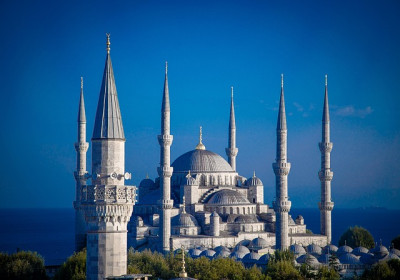
Tourism Rebounds Strongly in 2025 as Travelers Seek New Adventures Post-Pandemic The global tourism industry has entered a period of remarkable recovery in 2025, following several years of pandemic-related disruption. With the lifting of most travel restrictions, renewed consumer confidence, and a deep craving for exploration, tourism has surged across continents. Experts say this rebound is not merely a return to old patterns, but a reshaping of how people travel, what they value, and how the industry responds. International Travel Reaches Record Levels Countries around the world have seen a significant rise in international arrivals. Popular destinations like France, Thailand, Italy, and Mexico are reporting visitor numbers that not only match but exceed pre-pandemic figures. Airports are bustling, cruise ships are sailing at full capacity, and global airlines have reinstated and even expanded routes. This surge is being driven by both leisure and business travelers eager to reconnect with the world. Tourists Demand Deeper, More Meaningful Experiences Travelers in 2025 are no longer satisfied with generic sightseeing tours. There is a growing demand for immersive experiences—whether it's living with a local family in a remote village, joining a traditional cooking class, or volunteering in conservation projects. This shift reflects a deeper desire for cultural understanding, personal growth, and making lasting memories, rather than just collecting passport stamps. Technology Transforms the Travel Experience Advancements in technology have revolutionized every stage of the travel journey. From AI-powered itinerary planners and mobile boarding passes to biometric check-ins and real-time translation apps, modern travelers are enjoying unprecedented convenience. Virtual reality previews and augmented reality tours are also helping travelers plan smarter and engage more deeply with destinations. Sustainability Becomes a Core Concern Post-pandemic travelers are more environmentally conscious than ever before. Eco-tourism has moved from niche to mainstream, with tourists choosing green-certified hotels, carbon offset flights, and low-impact transport options. Many are also seeking out destinations that emphasize environmental protection, wildlife preservation, and sustainable development. Tour operators and governments are responding by investing in responsible travel infrastructure and education. Flexible Booking and Safety Measures Still Matter Despite the easing of global health threats, travelers remain cautious. Flexible booking policies, free cancellations, and comprehensive travel insurance are considered essential. Tourists also favor destinations with clear safety protocols and reliable healthcare systems. These preferences are shaping the policies of airlines, hotels, and tour agencies, which now compete not only on price and location but on traveler assurance. Domestic and Regional Tourism Remains Strong While international travel has boomed, domestic tourism has also seen steady growth. Many travelers are discovering hidden gems within their own countries—national parks, cultural heritage sites, and lesser-known towns—thanks to local government campaigns and improved transportation networks. Weekend getaways, road trips, and regional cruises are more popular than ever, helping stimulate local economies and reduce pressure on overcrowded hotspots. Travel Trends Are Redefining Industry Standards. From "workcations" that blend business with leisure to solo female travel and multi-generational family trips, the diversity of travel preferences is expanding. Social media continues to influence destination choices, while personalized travel experiences—tailored by data and AI—are raising expectations across the industry. The result is a tourism ecosystem that is more agile, inclusive, and innovative.

Why Train Travel Is the Future of Sustainable Tourism In the face of growing environmental concerns and a global push for greener alternatives, train travel has emerged in 2025 as one of the most promising solutions for sustainable tourism. With lower emissions, rising consumer interest in eco-conscious travel, and significant investment in modern rail infrastructure, trains are redefining the way people explore the world. More than a nostalgic throwback, rail journeys today offer comfort, speed, and environmental responsibility—qualities that align with the values of the modern traveler. Here are the key reasons why train travel is gaining momentum as the future of sustainable tourism: Lower Carbon Emissions and Environmental Impact Trains produce significantly fewer greenhouse gas emissions compared to airplanes or cars. Electric and high-speed rail systems, now common in many parts of Europe and Asia, offer one of the cleanest forms of long-distance transportation. As climate change concerns grow, both tourists and governments are recognizing rail’s role in reducing the carbon footprint of global travel. Train stations are often located in the heart of cities and towns, directly connecting tourists with local businesses, markets, and attractions. This helps distribute tourism income more evenly—particularly to smaller or rural communities that are bypassed by major airlines. The result is a more inclusive, grassroots tourism model that benefits a wider range of people. Expansion of High-Speed Rail Networks Countries around the world are heavily investing in high-speed rail infrastructure. Networks connecting major cities and even cross-border regions are making train travel faster and more convenient than ever. In many cases, high-speed trains now rival or outperform air travel when total journey time—including airport transfers and security—is considered.Trains offer a slower, more mindful travel experience, allowing passengers to enjoy scenic routes, changing landscapes, and cultural transitions along the way. Unlike flights, which are often stressful and rushed, rail journeys provide spacious seating, onboard amenities, and uninterrupted views, turning the journey itself into part of the adventure. Technological Advancements Enhance the Journey Modern rail travel is enhanced by digital ticketing, real-time updates, mobile booking apps, and AI-powered route planning. Wi-Fi connectivity and smart onboard systems are turning trains into fully connected environments that suit the needs of both leisure and business travelers. These innovations help make train journeys smoother, safer, and more enjoyable. Today’s travelers—especially younger generations—are more environmentally and socially conscious. Many actively choose lower-emission options and seek authentic, slower-paced experiences that align with their values. Trains match this shift in mindset, offering a responsible way to explore the world without sacrificing comfort or convenience. In Summary Train travel in 2025 is no longer just a practical alternative—it is a symbol of the tourism industry's transformation toward sustainability. With growing awareness of climate change, advancements in rail technology, and a collective desire for meaningful, lower-impact journeys, trains are on track to become the preferred mode of travel for the environmentally responsible tourist. As the world looks toward greener horizons, the rails are leading the way.

Hidden Gems in Southeast Asia You’ve Never Heard Of While millions flock to Southeast Asia every year to explore tourist magnets like Bali, Bangkok, and Halong Bay, the region also hides a treasure trove of lesser-known destinations waiting to be discovered. In 2025, as more travelers seek authentic, off-the-beaten-path experiences, these hidden gems are gaining quiet popularity. These spots offer untouched landscapes, rich local cultures, and fewer crowds—ideal for travelers craving depth, solitude, and meaningful adventures. Here are some of Southeast Asia’s best-kept secrets that deserve a place on your next itinerary: Ban Gioc Waterfall, Vietnam Tucked away on the northern border of Vietnam, Ban Gioc Waterfall is one of the most breathtaking natural wonders in Asia—yet remains largely unknown to international tourists. Surrounded by lush limestone mountains and rice paddies, this massive waterfall straddles the border with China and offers a peaceful, untouched atmosphere. Visitors can take bamboo rafts near the base, explore nearby caves, and immerse themselves in the slow-paced rural life of Cao Bang Province. While Langkawi and Penang steal the spotlight, Bagan Lalang is a serene coastal village just an hour from Kuala Lumpur that offers calm beaches, seafood feasts, and spectacular sunsets without the tourist crowds. It’s the perfect weekend escape for travelers seeking local charm and affordable luxury. The overwater villas here provide a unique stay experience, and nearby mangrove forests offer eco-tourism activities like kayaking and birdwatching. Champasak, Laos Nestled along the Mekong River in southern Laos, Champasak is a tranquil town rich in history and spiritual beauty. Home to the ancient Khmer temple complex of Wat Phou—a UNESCO World Heritage Site often compared to Angkor Wat but with far fewer tourists—Champasak offers a unique window into Southeast Asia’s pre-Angkorian past. The town is also known for its French colonial architecture, riverside cafes, and laid-back pace of life. Often overshadowed by Boracay and Palawan, Siquijor is a mystical island in the central Philippines famous for its folklore, healing traditions, and crystal-clear waters. With hidden waterfalls, white-sand beaches, coral reefs, and firefly-filled mangrove forests, the island offers a magical blend of nature and local legend. Visitors can snorkel, motorbike across the island, or even visit traditional healers known as “mambabarang.” Tumpak Sewu, Indonesia Often called the “Niagara Falls of Indonesia,” Tumpak Sewu is a stunning horseshoe-shaped waterfall located in East Java, surrounded by jungle cliffs and volcanic terrain. Unlike the more visited Mount Bromo or Bali beaches, this hidden paradise requires a trek through dense forest and river crossings—making the reward even more satisfying. It’s ideal for adventurers, photographers, and anyone wanting to experience Indonesia’s raw natural power up close. Located at the southernmost tip of Myanmar, Kawthoung is a quiet port town and the gateway to the unspoiled Mergui Archipelago—an island chain of over 800 largely untouched islets. The area is ideal for sailing, diving, and discovering secluded beaches that feel truly remote. With few visitors and an emerging eco-tourism scene, Kawthoung remains one of the last frontiers for explorers looking for solitude and oceanic beauty. In Summary Southeast Asia continues to surprise travelers with its diversity, depth, and hidden wonders. As the travel landscape evolves, these lesser-known destinations are proving that you don’t need crowds or famous landmarks to have an unforgettable experience. Whether you're seeking nature, culture, adventure, or reflection—these secret spots offer the essence of Southeast Asia in its purest, most authentic form.

The Smart Way to See the World: How AI Is Revolutionizing Travel In an age where time is precious and wanderlust runs deep, artificial intelligence (AI) is becoming the ultimate travel companion. Gone are the days of juggling dozens of browser tabs, flipping through outdated guidebooks, or relying on guesswork. In 2025, planning a trip is as effortless as asking the right question—and letting AI do the rest. From the way we search for destinations to how we experience them in real time, AI is reshaping travel into something smarter, faster, and deeply personal. Here’s how it’s changing the game: Personalized Planning at Lightning Speed AI takes your travel preferences—budget, travel style, past trips, and even your online behavior—and instantly curates custom itineraries. Whether you're a solo backpacker or a family planner, platforms like Google Travel and Hopper analyze real-time data to recommend the best times to fly, where to stay, and what to do—tailored just for you. Need to change a flight, book a last-minute hotel, or file a baggage complaint? AI-powered chatbots now handle customer service around the clock—no more hold music or call center frustration. These virtual agents respond in seconds, speak your language, and are trained to solve real issues efficiently. Seamless Experiences Beyond Booking AI continues to assist even after you’ve boarded the plane. From live translation apps and AR-guided tours to facial recognition at airports, tech-enhanced journeys are smoother and more immersive. Your smartphone becomes your personal concierge, navigator, and translator—all powered by intelligent systems. While AI makes travel more efficient, it hasn’t replaced the value of human intuition. For complex trips or once-in-a-lifetime experiences, many still trust human travel advisors. But for most travelers, AI offers freedom from stress and planning fatigue—without losing the joy of discovery. The Future Is Here AI isn’t just helping us travel—it’s redefining how we connect with the world. With smart tools at your side, the hardest part of your next adventure might just be deciding where to go.

They say some places feel like a dream even when you’re wide awake—and for me, Cappadocia, Turkey was exactly that. From the moment I arrived in the quiet town of Göreme, nestled among soft volcanic rock formations, I knew this trip would be different. Not rushed. Not crowded. Just deeply personal and soul-refreshing. And it started—quite literally—with a hot air balloon ride at dawn. A Sky Full of Magic Waking up at 4:30 a.m. wasn’t easy, but the silence of the pre-sunrise sky made every yawn worth it. As our balloon gently rose, the horizon began to blush with orange and pink. Below us, hundreds of fairy chimneys, ancient caves, and rock-carved churches glowed in soft morning light. And above? Dozens of other balloons floated quietly—no noise, no chaos, just the soft sound of wind and the occasional whoosh of fire. It wasn’t a ride—it was meditation in the sky. Underground Cities & Ancient Souls Later that day, I explored Derinkuyu, one of Cappadocia’s underground cities, stretching nearly 200 feet deep. Walking through narrow tunnels and ancient ventilation shafts, I imagined how thousands once hid here during invasions. There’s something humbling about standing in a place where people lived, survived, and prayed without sunlight—yet with hope. Staying in a Cave Hotel (Yes, Really) What made my trip even more surreal was sleeping in a cave. I stayed at a cozy cave hotel with stone walls, warm lighting, and a rooftop terrace perfect for stargazing. The temperature inside was always cool, even when the sun baked the valley outside. At night, sipping Turkish tea under a sky full of stars and the silhouette of mountains in the distance—I felt completely present. No noise. No notifications. Just peace. Food, People, and Unexpected Moments The people of Cappadocia are gentle and proud of their heritage. Every shop owner I met shared a story—about how their family carved stones, or grew apricots in the valley. I ate manti (Turkish dumplings), sipped apple tea, and tried testi kebab—a meat stew cooked inside a clay pot, which the waiter cracked open right in front of me with a tiny hammer.Every meal felt like a celebration, even when I was alone. Why You Should Go Cappadocia isn’t a place for flashy travel photos—although it’s impossible to take a bad one. It’s a place for quiet joy, ancient echoes, and reconnecting with the part of you that wants to slow down. If you’ve been looking for a sign to disconnect from the digital world and lose yourself in the sky, in history, and in simple human connection—this is it. Travel Tips: Best time to visit: April–June or September–October (less heat, fewer crowds) Bring warm clothes for early mornings—even in summer Book balloon rides in advance—they sell out fast! Try to stay in Göreme or Ürgüp for the best cave hotel experience Final Thought: Cappadocia didn’t just give me a vacation. It gave me stillness, wonder, and a reminder that the world is wide—and we are small, but blessed to explore it.

There are some places in the world that don’t look real — where landscapes feel borrowed from dreams and time flows a little slower. Cappadocia, in the heart of Turkey, is one such magical land. Last month, I had the chance to spend a few days exploring its surreal valleys, ancient cave dwellings, and colorful skies, and I’m still not over it. 🎈 Sunrise in the Sky: The Iconic Hot Air Balloon Ride Waking up at 4:30 a.m. may not sound fun on a vacation, but trust me, it’s worth it. As we ascended gently in our hot air balloon, the sky transformed into a canvas of pinks and golds. Floating above the fairy chimneys and undulating hills of Göreme was an experience I’ll never forget. It's quiet up there — almost sacred. No noise, no rush, just the gentle whoosh of the burner and the feeling of absolute freedom. 🏞️ Exploring the Valleys on Foot After touching down, I hiked through the Rose Valley and Love Valley. These trails are beginner-friendly but still feel like real adventures. Sculpted over millennia by wind and rain, the rock formations are almost otherworldly. Along the way, I stumbled upon centuries-old churches carved into cliffs, complete with faded frescoes — living proof of Cappadocia’s deep Christian history. 🏠 Sleeping in a Cave Hotel Yes, it’s as cool as it sounds! I stayed at a cave hotel in Uçhisar, where modern luxury meets ancient architecture. Thick stone walls kept the room cool, and I loved the cozy, candle-lit ambiance. At night, I’d sit on the terrace sipping Turkish tea, watching stars scatter across the sky — the kind of peaceful moment that stays with you long after you’ve gone. 🍽️ Food for the Soul Turkish cuisine is an adventure in itself. Every meal was a celebration — from slow-cooked Testi Kebab served in a clay pot to sweet, flaky baklava and rich, foamy Turkish coffee. Don’t miss trying the local wines either; Cappadocia is a hidden gem for wine lovers. 🛍️ Little Things, Big Memories On my last day, I wandered through Avanos, a town known for its pottery. I took a pottery class and made a (slightly lopsided) vase. It wasn’t perfect, but it’s now my favorite souvenir — a reminder that travel isn’t always about ticking off famous sights. It’s about stories, people, and little imperfect moments that turn into perfect memories. ✈️ Final Thoughts If you’re dreaming of a destination that feels like another planet, that feeds your soul and slows down time, Cappadocia is calling. Whether you’re traveling solo, with a loved one, or with friends, this Turkish gem promises an unforgettable experience.


Stepping into the enchanting realm of a forest walk, one enters a world brimming with tranquility and wonder. The air carries the invigorating scent of moss, leaves, and damp earth. Sunlight filters through the lofty canopy, casting a gentle glow upon the forest floor, where a tapestry of fallen leaves and delicate ferns unfolds. With each step, nature's symphony unfolds. The whispering of leaves creates a melodic rhythm, while the delightful chorus of birdsong adds a harmonious touch. The forest pulses with life, as playful squirrels scamper, graceful deer graze in distant clearings, and colorful butterflies dance upon the whimsical breeze. Each step in the forest unveils a new marvel—a delicate spider's web adorned with dewdrops, a majestic owl perched high on a branch, or a carpet of mushrooms emerging from decaying logs. Nature's artistry is on full display, reminding you of the intricate beauty that resides in even the smallest of details. In the heart of the forest, you discover a profound connection, not only with the natural world but also with your own being. The rhythmic crunch of leaves beneath your feet grounds you in the present moment. The solitude and serenity provide space for thoughts to wander freely, nurturing creativity and self-reflection. Amidst the stillness, you gain a renewed sense of clarity and perspective. A forest walk transcends mere physical exploration; it becomes a journey of the soul. It offers a chance to disconnect from the chaos of the modern world and reconnect with the simplicity and grandeur of nature. It serves as a reminder of our place in the web of life and the importance of preserving and cherishing these precious havens. As you emerge from the depths of the forest, you carry with you a piece of its enchantment—a sense of peace, wonder, and gratitude. The memory of the forest walk lingers, beckoning you to return and further immerse yourself in nature's embrace once more.

1 / 4 1. Seashells and Marine Life The beach is a treasure trove of seashells, each one unique in its shape, color, and texture. Embark on a beachcombing adventure, stooping down to collect these oceanic gems as you stroll along the shoreline. Marvel at their delicate beauty, appreciating the intricate patterns and shades they exhibit. Keep an eye out for fascinating marine life as well, such as schools of colorful fish darting through the waves, curious crabs scuttling along the sand, and the graceful dance of dolphins in the distance. These encounters with coastal creatures remind us of the rich biodiversity that thrives beneath the ocean's surface.

Global stock markets remained mixed today as investors weighed fresh U.S. inflation data, corporate earnings reports, and the ongoing economic uncertainty in China and Europe. The U.S. stock market opened slightly higher on Monday morning, with the Dow Jones Industrial Average rising 0.4%, the S&P 500 climbing 0.3%, and the Nasdaq Composite gaining 0.5% in early trading. Investors responded positively to June's U.S. Consumer Price Index (CPI) report, which showed inflation cooling slightly to an annual rate of 3.0%, down from 3.3% in May."Markets are optimistic that the Federal Reserve may pause or even cut interest rates by the fall," said Lisa Raymond, chief analyst at Morgan & Co. "But it's still a wait-and-see situation, especially with more earnings coming this week." Wall Street Opens Higher The U.S. stock market opened slightly higher on Monday morning, with the Dow Jones Industrial Average rising 0.4%, the S&P 500 climbing 0.3%, and the Nasdaq Composite gaining 0.5% in early trading. Investors responded positively to June's U.S. Consumer Price Index (CPI) report, which showed inflation cooling slightly to an annual rate of 3.0%, down from 3.3% in May. "Markets are optimistic that the Federal Reserve may pause or even cut interest rates by the fall," said Lisa Raymond, chief analyst at Morgan & Co. "But it's still a wait-and-see situation, especially with more earnings coming this week." Tech Leads the Way Technology stocks led the gains in the U.S., with Apple (AAPL) up 1.8% and Nvidia (NVDA) jumping 2.4%, as demand for AI and semiconductors remains strong. Tesla (TSLA) also rebounded, rising 3.1% after announcing better-than-expected Q2 vehicle deliveries. Global stock markets showed a mixed performance as investors weighed persistent inflation concerns against a wave of corporate earnings reports. While strong results from major tech companies helped lift some indexes, uncertainty surrounding central bank policies and the future path of interest rates kept others in check. In the U.S., Europe Struggles on Growth Concerns Meanwhile, European markets showed little movement, with the FTSE 100 in London flat and Germany’s DAX down 0.2%. Investors remain concerned about weak industrial output and rising energy costs across the Eurozone.“The European economy is showing signs of fatigue,” said Carla Dupont, economist at BNP Paribas. “High borrowing costs and geopolitical tensions are dragging down business activity.”Global stock markets showed a mixed performance as investors weighed persistent inflation concerns against a wave of corporate earnings reports. While strong results from major tech companies helped lift some indexes, uncertainty surrounding central bank policies and the future path of interest rates kept others in check. In the U.S., Asia Mixed as Chinese Markets Slump In Asia, markets showed mixed results. Japan’s Nikkei 225 gained 0.6%, supported by strong export data. However, Chinese markets fell sharply, with the Shanghai Composite down 1.2%, as fears about the country’s property sector and sluggish consumer spending persisted. Gains in consumer and tech sectors pushed markets higher, but weaker-than-expected bank earnings and inflation-related jitters limited broader momentum. European markets edged lower as traders grew cautious about global trade tensions and slowing growth indicators, while Asian markets saw mixed results, with Hong Kong posting modest gains and Tokyo slipping slightly. Overall, market sentiment remains cautious as investors await further economic data and guidance from central banks. Looking Ahead Investors are now turning their focus to key corporate earnings this week from major banks like JPMorgan Chase, Goldman Sachs, and Citigroup, as well as tech giants like Netflix and Microsoft. The results are expected to provide a clearer picture of business resilience amid high interest rates and uncertain global demand. Overall, market sentiment remains cautious as investors await further economic data and guidance from central banks.
The U.S. Supreme Court issued a landmark ruling on Monday, declaring that former presidents are entitled to partial immunity from criminal prosecution for actions taken while in office. The 6-3 decision, split along ideological lines, has triggered intense political and legal debate across the country.The ruling stems from charges brought against former President Donald Trump, who has faced multiple indictments related to alleged interference in the 2020 presidential election and events surrounding the January 6 Capitol riot. The Court’s decision now makes it more difficult for prosecutors to pursue charges for actions deemed as part of a president's official duties. Divided Reactions President Joe Biden responded to the ruling by calling it a “dangerous precedent” that could place future presidents above the law. “No one in America should be beyond accountability,” he said during a press conference.Republican leaders, however, welcomed the decision. House Speaker Steve Scalise stated, “This ruling upholds the constitutional separation of powers and protects the office of the presidency from political attacks.”The recent Supreme Court ruling on presidential immunity has ignited intense debate across the United States, with sharp divisions emerging among legal experts, lawmakers, and the public. The decision, which sets new boundaries on the legal protections afforded to sitting presidents, has far-reaching implications for the balance of power and accountability in government. Supporters argue that the ruling upholds the integrity of the executive office by protecting it from politically motivated prosecutions, while critics warn that it could open the door to unchecked presidential authority. What the Ruling Means The Court ruled that while presidents do not have absolute immunity, they are shielded from criminal prosecution for actions that are “within the outer perimeter of official presidential responsibilities.” However, personal or unofficial actions remain subject to prosecution.Legal experts say the ruling could delay several of Trump’s ongoing legal cases, potentially impacting the 2024 election season, where Trump remains the leading Republican contender. As protests, press conferences, and panel discussions erupt nationwide, the ruling is expected to influence upcoming elections and reshape the legal landscape surrounding executive power for years to come. Public Response The recent Supreme Court ruling on presidential immunity has ignited intense debate across the United States, with sharp divisions emerging among legal experts, lawmakers, and the public. The decision, which sets new boundaries on the legal protections afforded to sitting presidents, has far-reaching implications for the balance of power and accountability in government. Supporters argue that the ruling upholds the integrity of the executive office by protecting it from politically motivated prosecutions, while critics warn that it could open the door to unchecked presidential authority. As protests, press conferences, and panel discussions erupt nationwide, the ruling is expected to influence upcoming elections and reshape the legal landscape surrounding executive power for years to come.
The United States has long been known as a nation of immigrants and diversity. Over the last century, significant demographic changes have occurred due to immigration patterns, birth rates, cultural shifts, and changing social values. This report outlines how the racial, regional, religious, and national origin composition of the U.S. population has evolved — and where it’s heading. Table 1: U.S. Population by Race/Ethnicity (1960–2024) Year White (Non-Hispanic) Black Hispanic/Latino Asian Native American Multiracial Other 1960 85% 10.5% 3.5% 0.5% 0.3% — 0.2% 1980 80% 11.5% 6.4% 1.5% 0.6% — 0.3% 2000 69% 12.3% 12.5% 3.6% 0.9% 2.4% 0.3% 2020 59.3% 13.4% 18.5% 5.9% 1.3% 2.8% 0.1% 2024* 57.1% 13.2% 19.1% 6.5% 1.4% 3.1% 0.2% Over the last six decades, the regional distribution of the U.S. population has undergone a substantial transformation. Economic shifts, climate preferences, and immigration patterns have contributed to the steady rise of the South and West as the primary hubs of growth, while the Northeast and Midwest have seen their shares of the national population gradually decline. The United States Census Bureau divides the country into four main regions: Northeast, Midwest, South, and West. Over the past several decades, regional population distribution has shifted significantly due to migration trends, job availability, climate preferences, and immigration. Table 2: Regional Population Distribution (by U.S. Census Regions) Region 1960 1980 2000 2020 2024 (Est.) Northeast 25% 22% 19% 17% 16.5% Midwest 29% 27% 23% 20% 19.7% South 31% 34% 36% 38% 39.2% West 15% 17% 22% 25% 24.6% Key Takeaway: The South and West have seen consistent growth due to warmer climates, job markets, and immigration hubs (e.g., Texas, Florida, California). The religious landscape of the United States has undergone a dramatic transformation over the past 70 years. While the country once identified overwhelmingly as Christian — particularly Protestant — more Americans today are choosing no religious affiliation, a trend that reflects shifting cultural norms, generational change, and growing diversity. Demography by religion Religion 1950 1980 2000 2020 2024 (Est.) Protestant 69% 56% 51% 40% 39% Catholic 25% 27% 24% 21% 20% Jewish 3% 2.5% 2% 1.8% 1.8% Muslim <0.1% 0.5% 1% 1.3% 1.5% Hindu/Buddhist <0.1% 0.5% 1.5% 2% 2.2% Unaffiliated 2% 7% 15% 27% 29% Key Shift: The rise of the “nones” (religiously unaffiliated) is among the most dramatic religious shifts in recent history. Immigration has always been a cornerstone of the American story. But over the past 60 years, the origins of the U.S. foreign-born population have changed dramatically — shifting from a Europe-dominated pattern to one led by Latin America, Asia, and more recently, Africa. These demographic transformations reflect both global trends and U.S. immigration policy reforms. Summary Insights Racial Diversity Growing Rapidly: Non-Hispanic Whites are no longer a supermajority. By 2045, the U.S. is projected to be “minority-majority.” Regional Power Shift: The South and West are economic and population growth engines. Religious Landscape is Secularizing: Protestants and Catholics are declining; the religiously unaffiliated are growing fastest. Immigration Patterns Have Shifted: From European-dominated to Latin American and Asian-majority since 1965’s Immigration and Nationality Act.
The U.S. Supreme Court issued a landmark ruling on Monday, declaring that former presidents are entitled to partial immunity from criminal prosecution for actions taken while in office. The 6-3 decision, split along ideological lines, has triggered intense political and legal debate across the country. The ruling stems from charges brought against former President Donald Trump, who has faced multiple indictments related to alleged interference in the 2020 presidential election and events surrounding the January 6 Capitol riot. The Court’s decision now makes it more difficult for prosecutors to pursue charges for actions deemed as part of a president's official duties. Heatwave Grips U.S. South and Midwest, Breaking Temperature Records Data Table Price Total 1200 1200 Ata Moyda Demographic Data District Population Percentage Noakhali 31,000,00 5% Cumilla 35,000,00 5.5% Divided Reactions President Joe Biden responded to the ruling by calling it a “dangerous precedent” that could place future presidents above the law. “No one in America should be beyond accountability,” he said during a press conference. Republican leaders, however, welcomed the decision. House Speaker Steve Scalise stated, “This ruling upholds the constitutional separation of powers and protects the office of the presidency from political attacks.” What the Ruling Means The Court ruled that while presidents do not have absolute immunity, they are shielded from criminal prosecution for actions that are “within the outer perimeter of official presidential responsibilities.” However, personal or unofficial actions remain subject to prosecution. Legal experts say the ruling could delay several of Trump’s ongoing legal cases, potentially impacting the 2024 election season, where Trump remains the leading Republican contender. Public Response Protests erupted in major cities including New York, Los Angeles, and Chicago, with citizens expressing fears that the decision could weaken American democracy. On social media, the hashtag #NoOneAboveTheLaw trended nationwide.
As soon as he hears the news of someone's death, he rushes to the graveyard on horseback with his required tools. Like a special companion on the final journey of a person, the 67-year-old extends his sincere hands. In a heartbreaking twist of fate, the faithful companion of gravedigger Manu Mia was killed yesterday, while Manu himself remains hospitalised, battling for his life. The 65-year-old Manu Mia, a familiar figure in the community for over four decades, has long been known for his humble service digging graves and transporting bodies in his modest wooden cart, drawn by his beloved horse, Shonar Pakhi. Residents say the bond between Manu and the gentle brown mare was unlike any they had seen—a relationship forged through hardship, routine, and deep affection. Manu was admitted to the hospital last week following complications from a respiratory illness. “He kept asking about the horse even from the hospital bed,” said his nephew, Rafique Mia. “He didn’t want her left alone.” Tragedy struck yesterday morning when Shonar Pakhi was struck and fatally injured by a speeding motorbike near the village graveyard. Witnesses said the horse had broken loose from her makeshift rope tether and was calmly walking toward the graveyard entrance, perhaps out of instinct. “She was not just a horse; she was family,” said Rahima Begum, a long-time neighbour. “That animal had pulled hundreds of funeral carts, always steady, always calm. To see her die like this, without her owner even knowing yet—it’s just too much.” The rider of the motorbike fled the scene, and police say they are investigating the hit-and-run incident. So far, no arrests have been made. News of the horse’s death has not yet been shared with Manu, who remains in critical but stable condition. Family members are struggling with how to break the devastating news. Locals have expressed shock and sorrow, with many calling for better enforcement of road safety rules in the area. A small vigil was held near the graveyard last night, where residents lit candles and shared memories of the old gravedigger and his loyal horse. “Manu Mia’s work was never glamorous, but he did it with dignity,” said Abdul Karim, a community elder. “Now, while he fights for his life, he has lost the only creature who stood by him through every sorrowful journey. It’s a tragic chapter in a quiet man’s life.”


